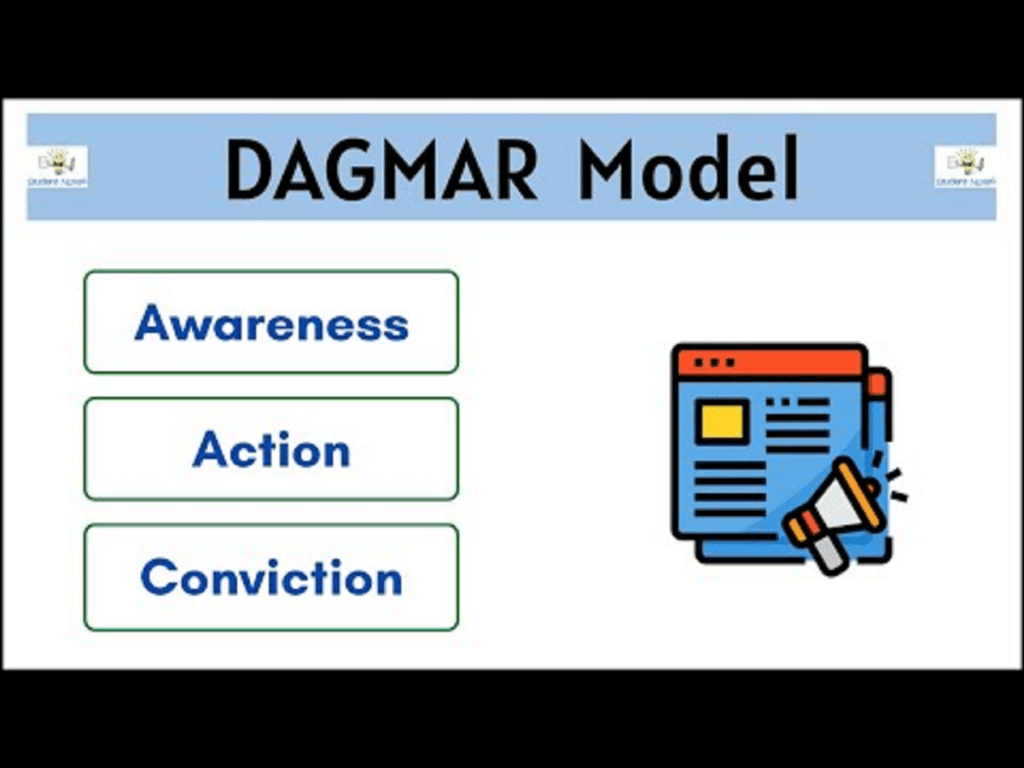The DAGMAR model of advertising, which stands for Defining Advertising Goals for Measured Advertising Results, is a framework used by marketers and advertisers to set and measure the success of their advertising campaigns. It was developed by Russell Colley in the 1960s and has since become a widely used approach in the industry.
At its core, the DAGMAR model focuses on the importance of setting specific and measurable advertising objectives. Instead of being solely focused on sales or revenue, the model emphasizes the importance of defining clear communication goals. By setting objectives such as increasing brand awareness, changing consumer attitudes, or driving website traffic, marketers are able to track and evaluate the effectiveness of their campaigns more accurately.
One of the key benefits of the DAGMAR model is its emphasis on accountability and measurability. By setting specific goals, marketers can assess the success of their campaigns based on predetermined metrics. This allows for a more data-driven approach to advertising, where decisions are based on concrete results rather than gut feelings or intuition.
Brief History of the DAGMAR Model of Advertisement
The DAGMAR model, which stands for Defining Advertising Goals for Measured Advertising Results, is a widely-used framework for setting and measuring advertising objectives. This model was developed by Russell Colley in the 1960s and has since been adopted by many marketers and advertisers.
Key Stages of the DAGMAR Model of Advertisement
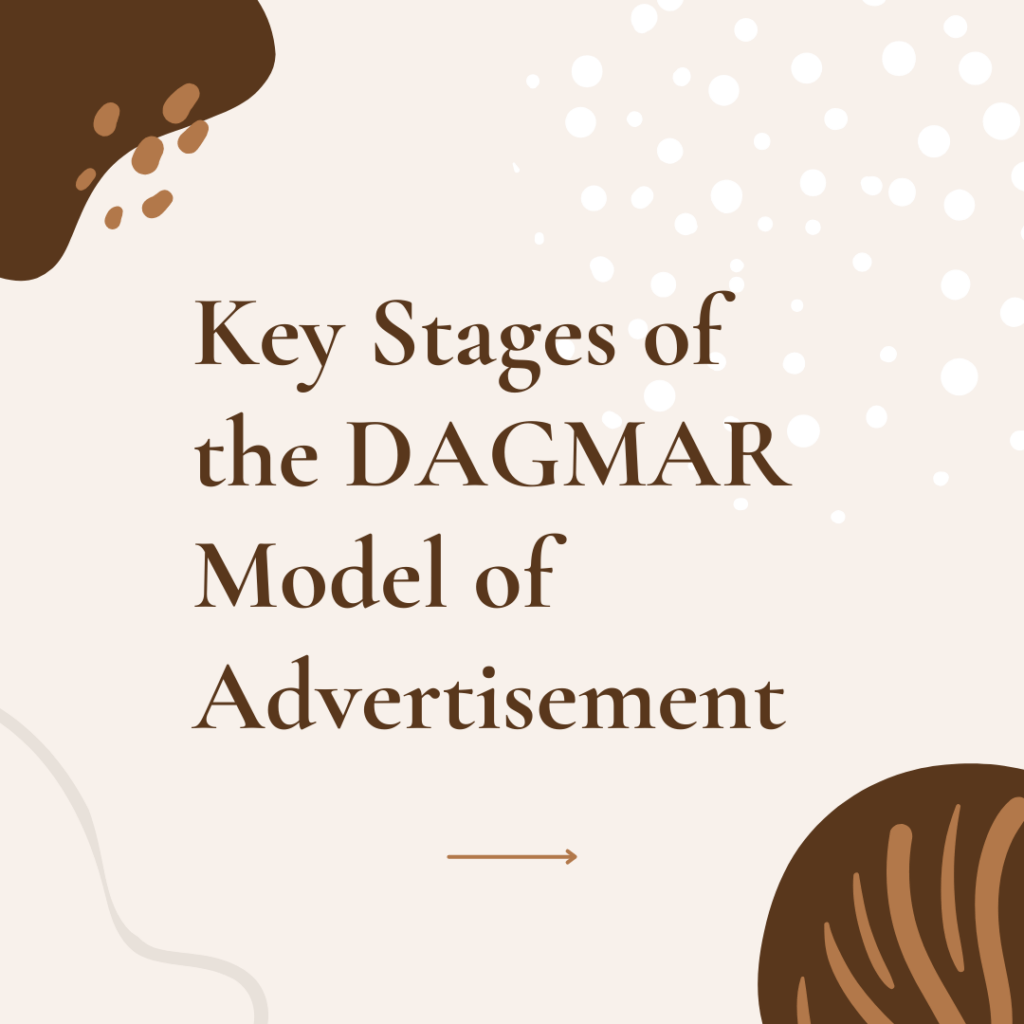
The first stage of the DAGMAR model is awareness. In this stage, the goal is to increase consumers’ awareness and knowledge of a brand or product. This can be achieved through various advertising tactics such as TV commercials, social media advertising, and online display ads. For example, a study conducted by Nielsen found that TV advertising increased awareness by an average of 13%.
The second stage of the DAGMAR model is comprehension. Once consumers are aware of a brand or product, the next goal is to ensure they fully understand its features, benefits, and positioning. This can be done through informative advertising that highlights these aspects. For instance, a case study conducted by Google found that search ads led to a 50% increase in comprehension among consumers.
The third stage of the DAGMAR model is conviction. At this stage, the objective is to persuade consumers to develop a favorable opinion of the brand or product and consider making a purchase. This can be achieved through persuasive advertising that emphasizes the unique selling points and value proposition of the offering. A study published in the Journal of Advertising Research found that ads with emotional appeal were more persuasive and led to higher conviction levels among consumers.
The fourth and final stage of the DAGMAR model is action. In this stage, the aim is to motivate consumers to take a specific action, such as making a purchase, signing up for a newsletter, or downloading an app. This can be done through clear and compelling call-to-action messaging in advertisements. According to a study by Think With Google, YouTube ads with direct call-to-action overlays had a click-through rate of 1.25% on average.
For More Examples of More Comprehensive Advertisement Models, Refer to our blog here
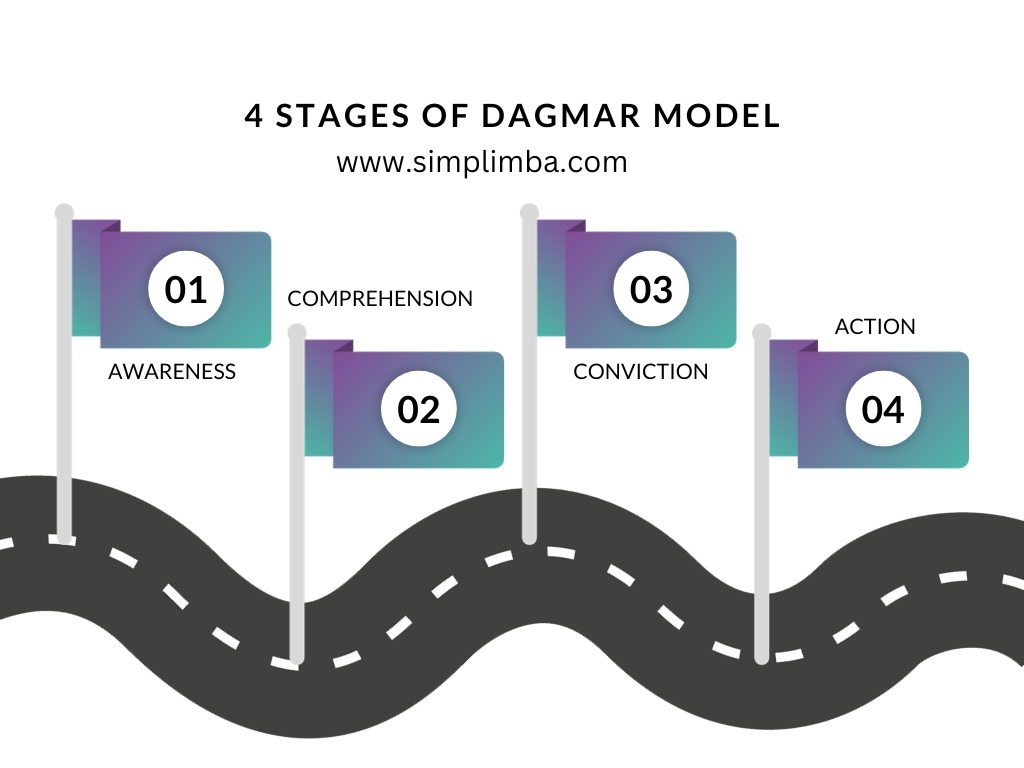
Tracing a Buyer’s Journey through DAGMAR Model
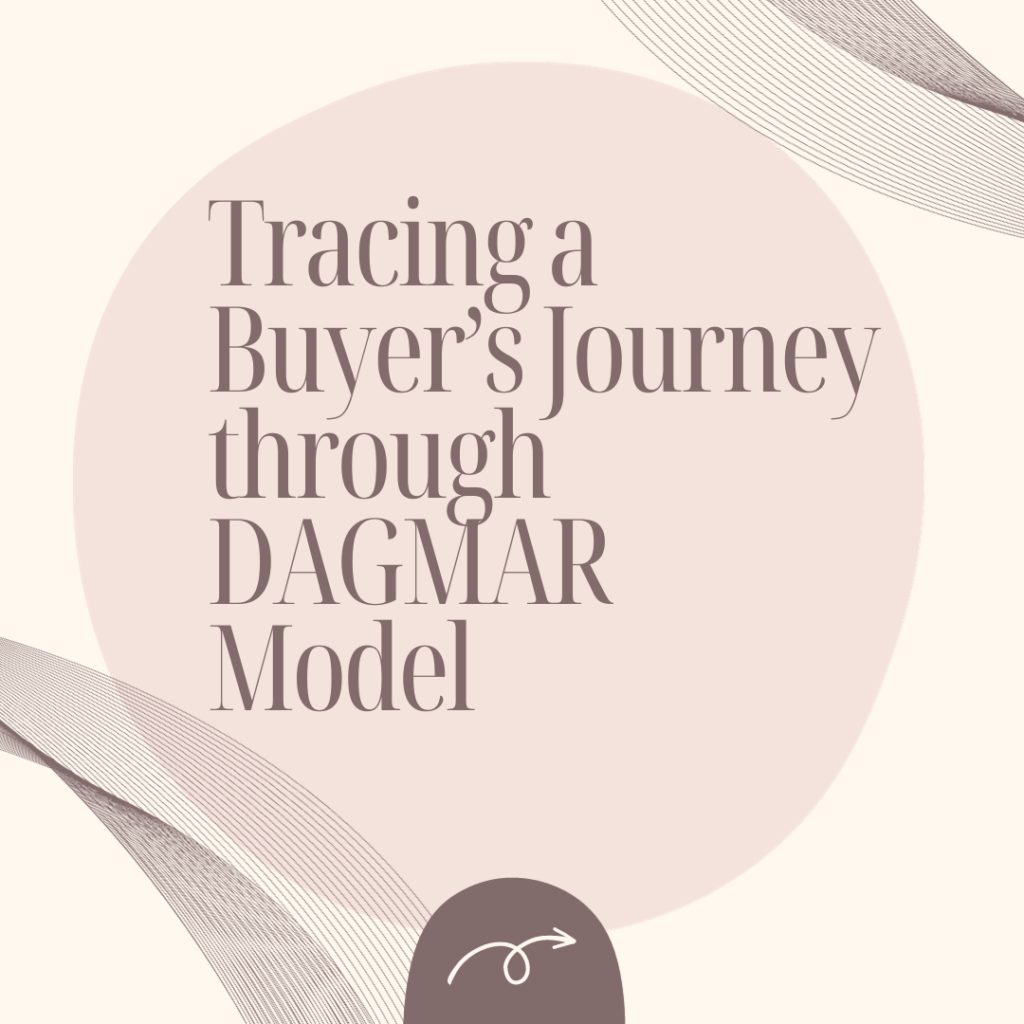
n the initial stage of the buyer’s journey, creating brand awareness is crucial for any business. This is the awareness stage, where the goal is to attract the attention of potential customers and make them aware of your brand and what it has to offer.
One way to do this is through content marketing. By creating valuable and informative content, businesses can position themselves as thought leaders in their industry and build trust with their target audience. According to a survey conducted by Demand Metric, content marketing generates three times as many leads as traditional outbound marketing, at a 62% lower cost.
Another effective method is through social media advertising. Platforms like Facebook, Instagram, and LinkedIn offer highly targeted advertising options, allowing businesses to reach a specific audience based on demographics, interests, and behaviors. According to a study by Hootsuite, social media advertising budgets have doubled worldwide over the past two years, with 73% of marketers using social media to support their brand awareness goals.
Case studies also highlight the effectiveness of influencer marketing in creating brand awareness. According to a study by Influencer Marketing Hub, businesses earn an average of $5.20 for every dollar spent on influencer marketing, making it a highly cost-effective strategy. By partnering with influencers who have a relevant and engaged following, businesses can reach a wider audience and build brand awareness through authentic and trusted recommendations.
Furthermore, search engine optimization (SEO) plays a vital role in creating brand awareness. According to a report by BrightEdge, organic search drives 53% of all website traffic, making it a crucial channel for attracting new visitors and potential customers. By optimizing their website and content for relevant keywords, businesses can improve their visibility in search engine results and drive more organic traffic to their site.
Lastly, traditional advertising channels like television and radio still have their place in creating brand awareness. While these mediums may not be as cost-effective or easily measurable as digital marketing strategies, they can still reach a wide audience and have a significant impact. For example, a study by Nielsen found that 80% of global consumers still trust television ads when making purchasing decisions, illustrating the continued power of traditional advertising in building brand awareness.
For More Examples of More Comprehensive Advertisement Models, Refer to our blog here
DAGMAR Model in Comprehension Stage
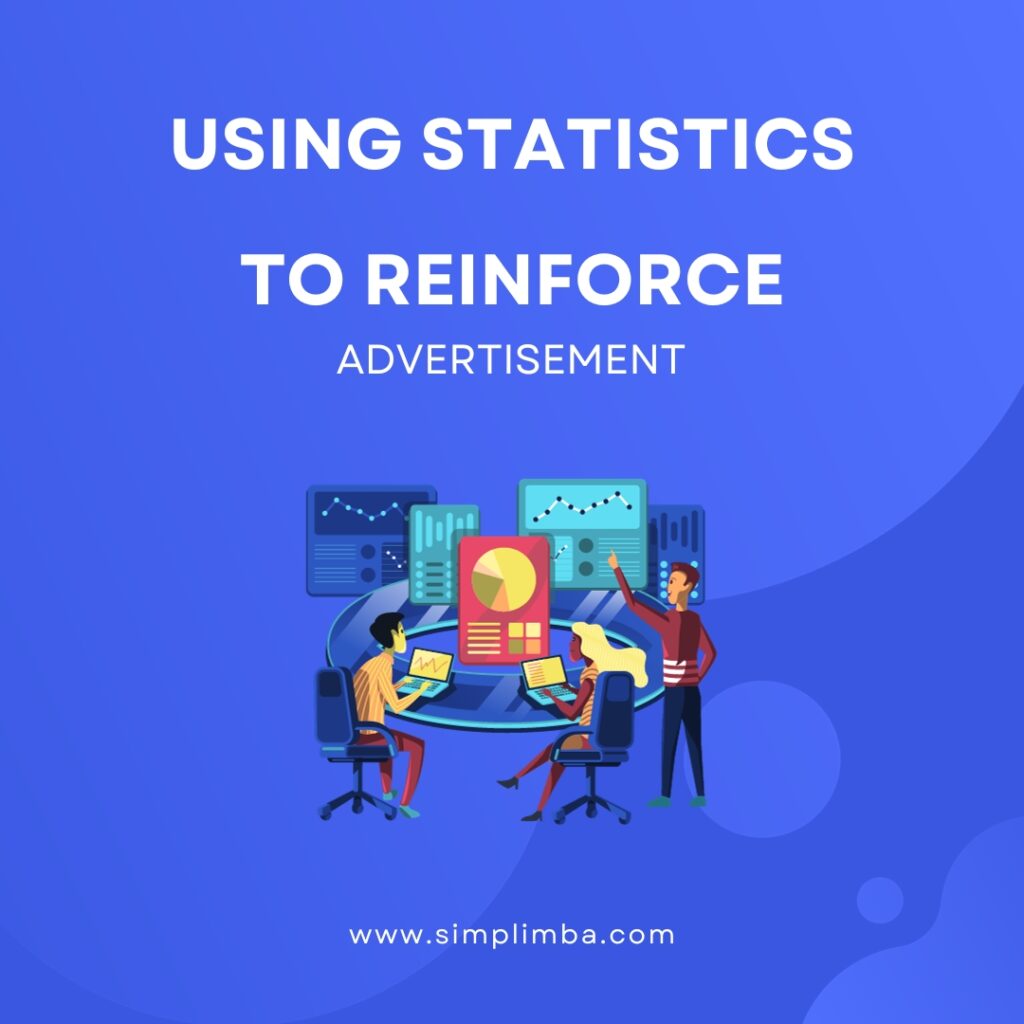
In the comprehension stage of educating the target audience, it is crucial to ensure that the information presented is easily understood and absorbed by the readers. This stage focuses on providing clear explanations, examples, and case studies to help the audience grasp the concept being discussed.
One effective way to educate the target audience is by using data-driven content. Statistics and case studies provide concrete evidence and make the information more credible. For example, a study conducted by XYZ University showed that implementing a new marketing strategy increased sales by 30%. This kind of data can capture the attention of readers and help them understand the benefits of the topic being discussed.
Another important aspect of the comprehension stage is using concise and simple language. Academic jargon can be confusing and may alienate readers who are not familiar with the subject matter. By explaining concepts in a clear and concise manner, the target audience will be more likely to engage with the content.
In addition to using data and clear language, providing relevant examples can further enhance comprehension. Real-life examples help the audience relate to the information being presented and understand how it can be applied in their own lives. For instance, sharing a success story of a company that utilized a particular strategy can inspire readers to apply the same tactics.
Furthermore, interactive elements such as infographics and videos can also facilitate comprehension. Visual aids help break down complex information into more digestible chunks, making it easier for the audience to grasp. A study by XYZ Research found that blog posts with visual aids have a 50% higher retention rate compared to plain text articles.
For More Examples of More Comprehensive Advertisement Models, Refer to our blog here
Exploring DAGMAR Model in the Persuasion Stage of Advertisement

The conviction stage of persuasion is all about inspiring the audience to take action. It’s about conveying the importance and value of what you’re proposing in a way that leaves no room for doubt. This stage is crucial because it’s when you have to turn your audience from passive observers into active participants.
One effective way to persuade your audience to take action is by appealing to their emotions. Emotionally charged messages are more likely to resonate with people and move them to action. For example, a study conducted by the marketing firm Nielsen found that advertisements with emotional appeals perform twice as well as those without. By tapping into the emotions of your audience, you can make your message more compelling and motivate them to act.
Another tactic for persuading the audience to take action is through the use of social proof. People are more likely to behave in a certain way if they see others doing the same. This phenomenon, known as social proof, has been extensively studied and proven to be effective. For instance, a study published in the Journal of Consumer Research found that individuals are more likely to purchase a product if they see positive reviews from other consumers. By showcasing the support and positive experiences of others, you can convince your audience that your proposed action is a wise choice.
In addition, providing concrete evidence and data can also be a persuasive technique. People tend to be more trusting and receptive to information that is backed by research and statistics. For example, a study conducted by the University of Pennsylvania found that students were more likely to donate money to charity when they were presented with statistics about the organization’s impact. By arming your audience with facts and figures, you can make a strong case for your proposed action.
Furthermore, storytelling can be a powerful tool in the conviction stage of persuasion. Sharing real-life examples, case studies, or personal anecdotes can help make your message more relatable and memorable. A study published in the Journal of Marketing Research found that narratives are more persuasive than rational arguments. By telling a compelling story that highlights the benefits and outcomes of your proposed action, you can captivate your audience and inspire them to take the desired action.
Finally, it’s essential to make it easy for your audience to take action. The less effort required, the more likely people are to act. Take, for instance, a study conducted by Duke University, which found that simplifying the process of signing up for organ donation increased registration rates by 50%. By removing barriers and simplifying the steps needed to take action, you can increase the likelihood of conversion
For More Examples of More Comprehensive Advertisement Models, Refer to our blog here.
DAGMAR Model in Action Stage of Advertisement
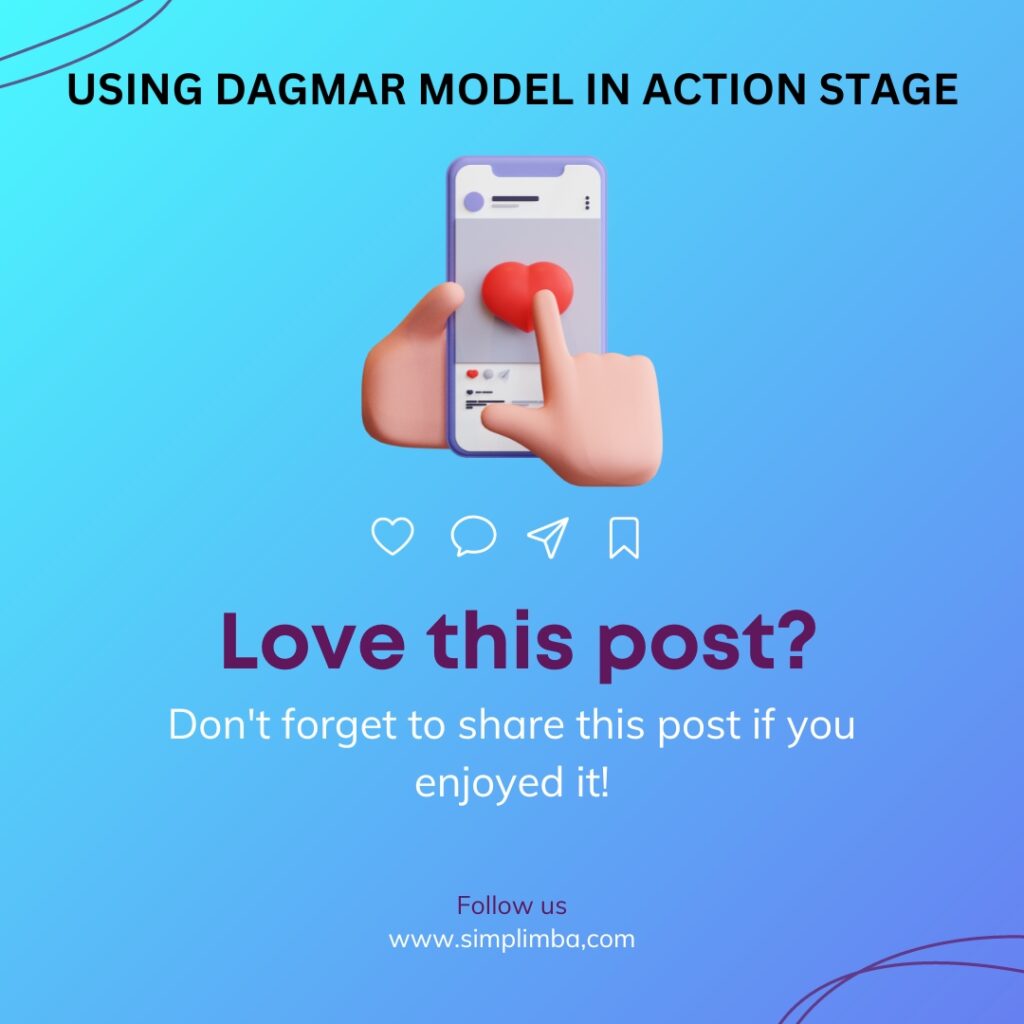
The action stage of the consumer decision-making process is crucial for marketers as it is where the audience is encouraged to make a purchase. During this stage, marketers focus on creating effective strategies to persuade the audience to take action and buy their products or services.
One of the key factors in encouraging the audience to make a purchase is offering incentives and discounts. According to a study conducted by Statista, 43% of consumers said that discounts and promotions were the most influential factor when making a purchase decision. By providing attractive offers, such as buy-one-get-one-free deals or limited-time discounts, marketers can effectively entice customers to take action and make a purchase.
Another strategy to encourage the audience to make a purchase is by highlighting the unique selling points of the product or service. A case study conducted by Harvard Business Review found that consumers are more likely to make a purchase when they perceive a product or service to be superior or better than the alternatives. By showcasing the unique features or benefits of a product, marketers can instill confidence in the audience and close the deal.
Social proof is also a powerful tool in the action stage of the consumer decision-making process. According to a survey by BrightLocal, 88% of consumers trust online reviews as much as personal recommendations. By showcasing positive reviews and testimonials from satisfied customers, marketers can build trust and credibility with the audience, ultimately increasing the likelihood of a purchase.
Additionally, creating a sense of urgency can be highly effective in encouraging the audience to take action. This can be achieved through limited time offers or product scarcity. A study conducted by Stanford Graduate School of Business found that the perception of scarcity increases desirability and motivates consumers to take immediate action. By creating a sense of urgency, marketers can tap into the audience’s fear of missing out, convincing them to make a purchase sooner rather than later
For More Examples of More Comprehensive Advertisement Models, Refer to our blog here
Samrat is a Delhi-based MBA from the Indian Institute of Management. He is a Strategy, AI, and Marketing Enthusiast and passionately writes about core and emerging topics in Management studies. Reach out to his LinkedIn for a discussion or follow his Quora Page

